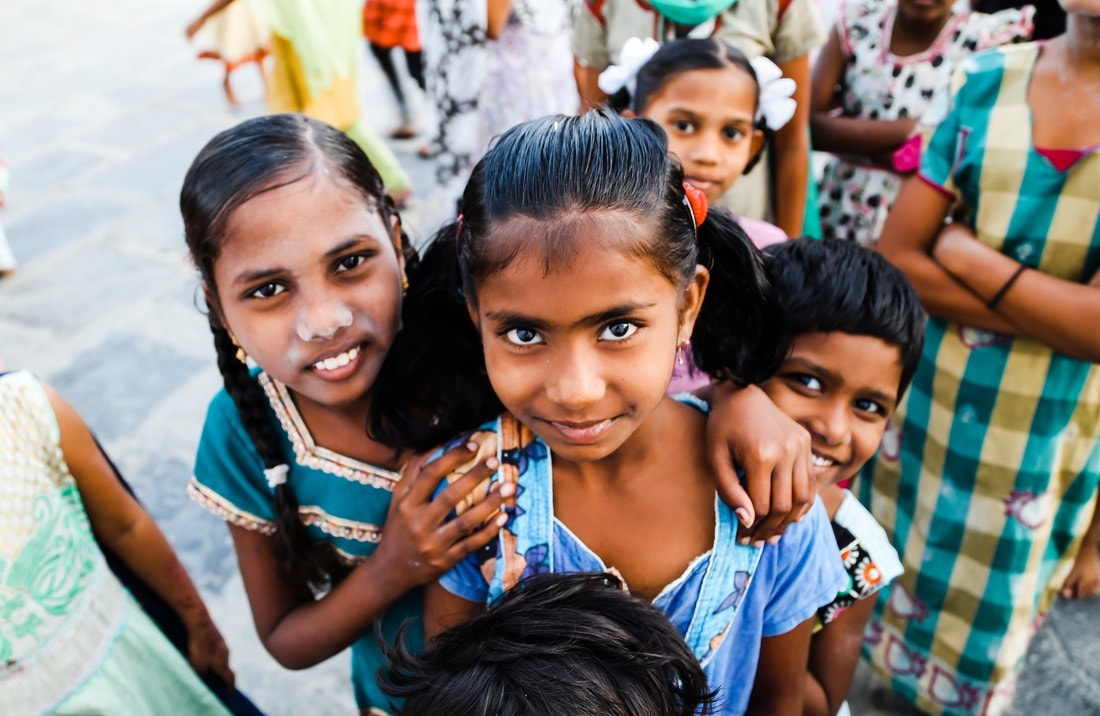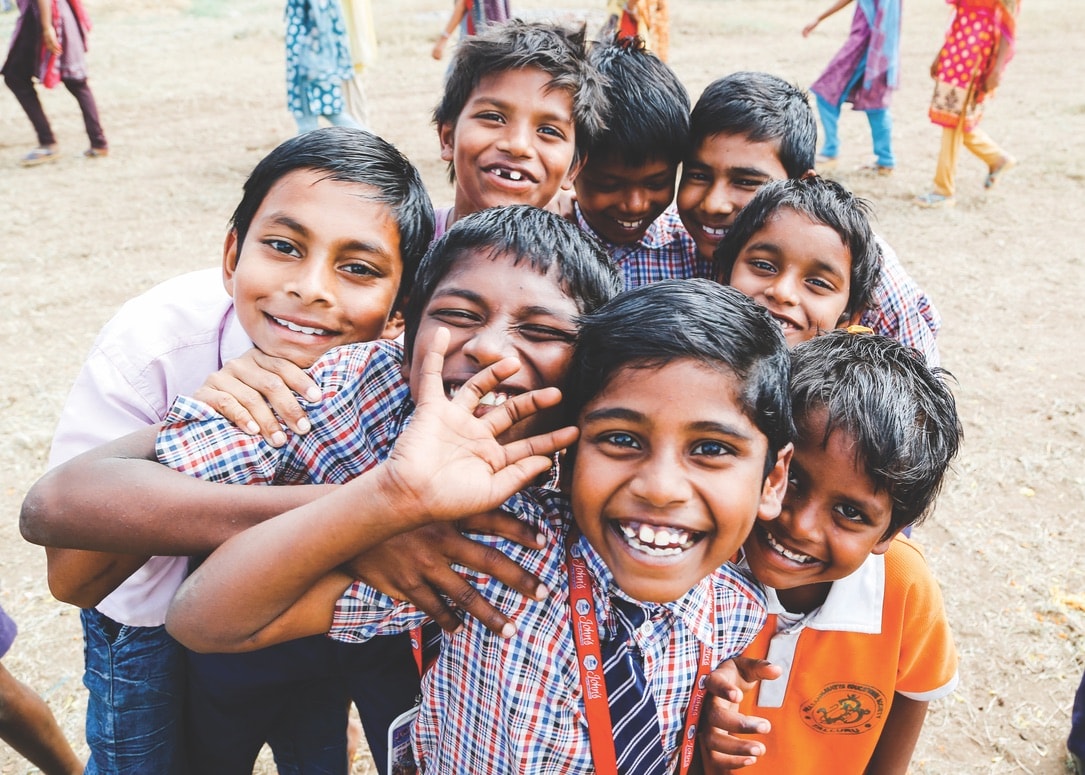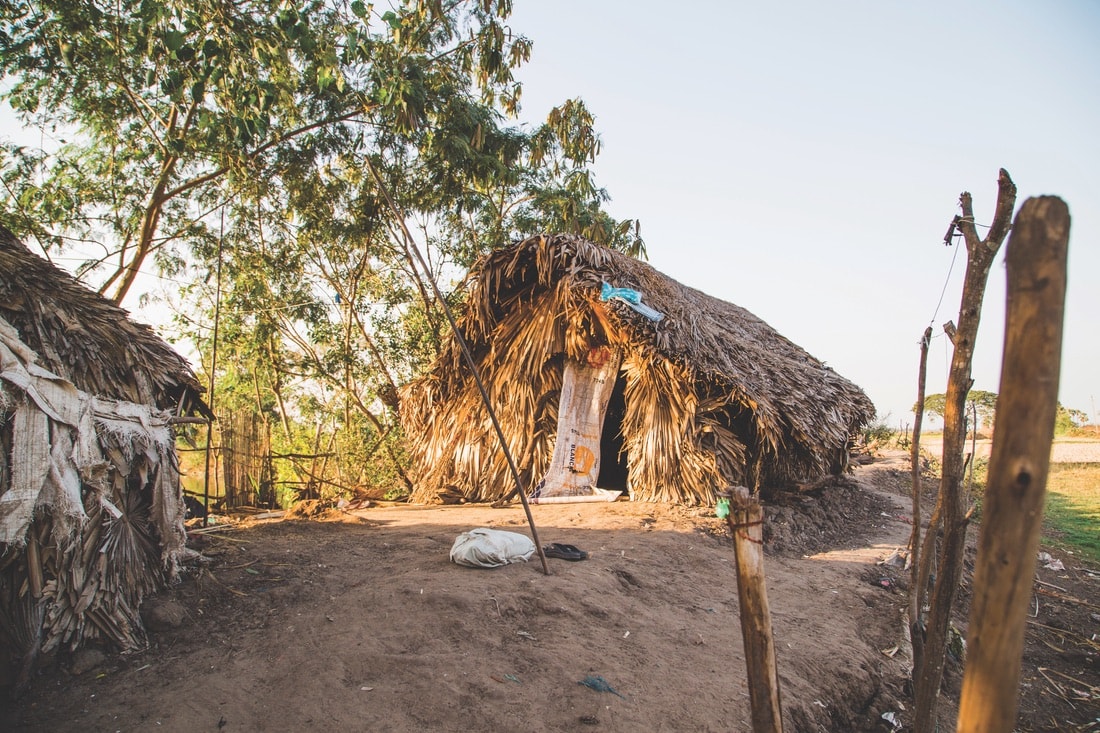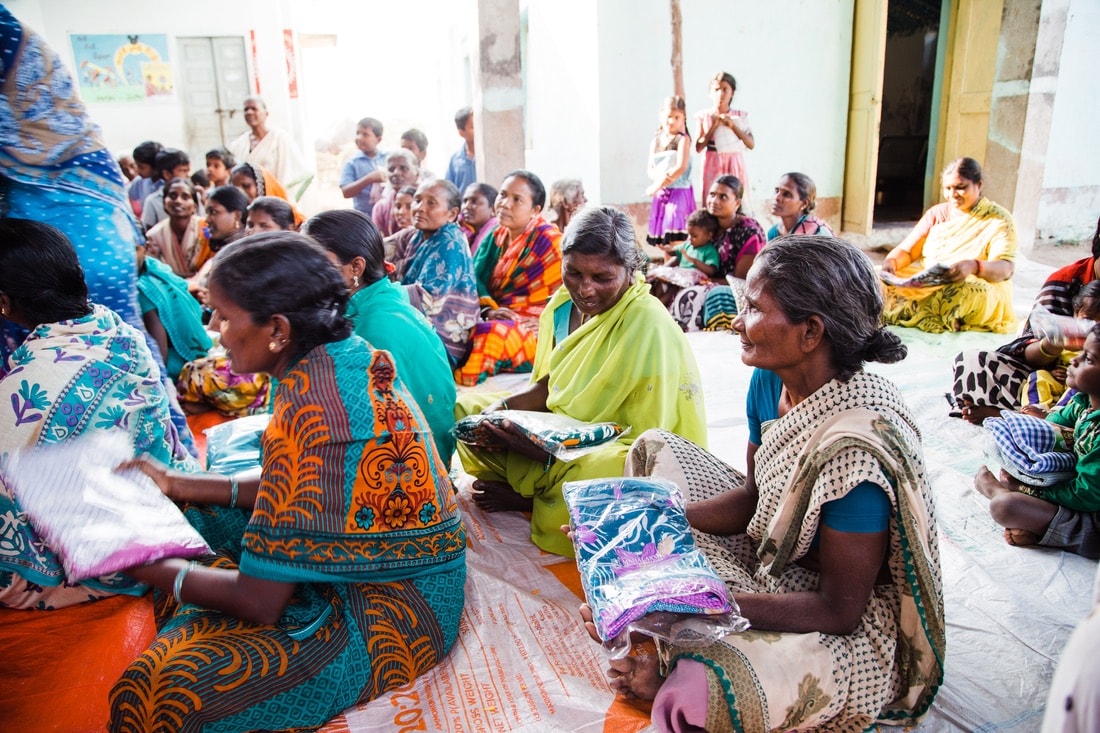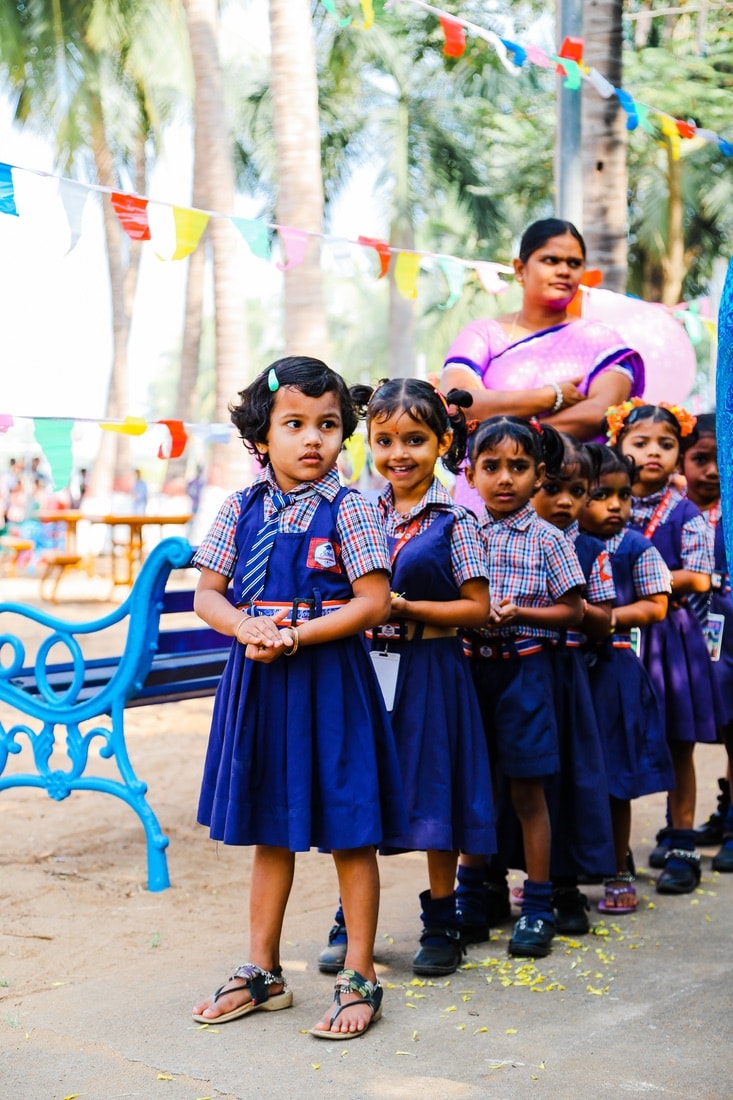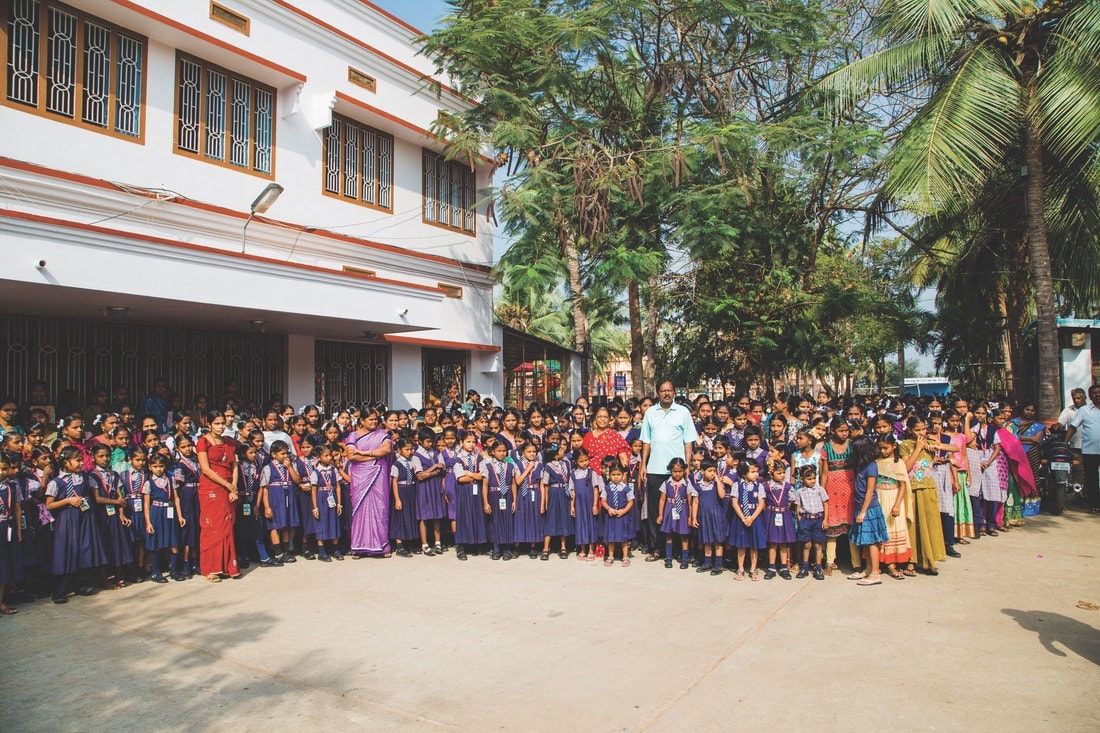
vie-magazine-India-hero-min
Preshanti and friends in the courtyard of the dormitory where they live
Caste Away
The Journey to Meet Preshanti
By Jake and Hannah Vermillion | Photography by Hannah Vermillion
It was five o’clock, the sun was setting, and I realized I was lost somewhere in the heart of rural India. Big white cows, men herding flocks of goats, and women resplendent in their saris lined the crowded streets as I pushed through them to make my way back to the orphanage that was my home for the next few days.
How did I, a graphic designer from Florida, end up in the colorful whirlwind of a bustling Indian town? It was thanks to a beautiful little girl whose picture hangs on my fridge. She gave me the courage to face my fears, journey to the other side of the world, and experience the bittersweet reality of life in India.
For more than a decade, my husband, Jake, and his family traveled every few years to Repalle, a smallish town in the Indian countryside, to support a ministry there that cares for India’s most vulnerable: orphans, widows, the elderly, and the indigent. When we first started dating, Jake would bring home pictures and stories from his trips to Repalle. For years, I vowed to one day bring home pictures and stories of my own; but life just seemed to keep getting in the way. Then, just over a year ago, during his most recent trip to India, Jake sent me a video. I clicked Play, and a little girl appeared on the screen with shimmering eyes, long, loosely curled pigtails, and a smile that immediately warmed my soul.
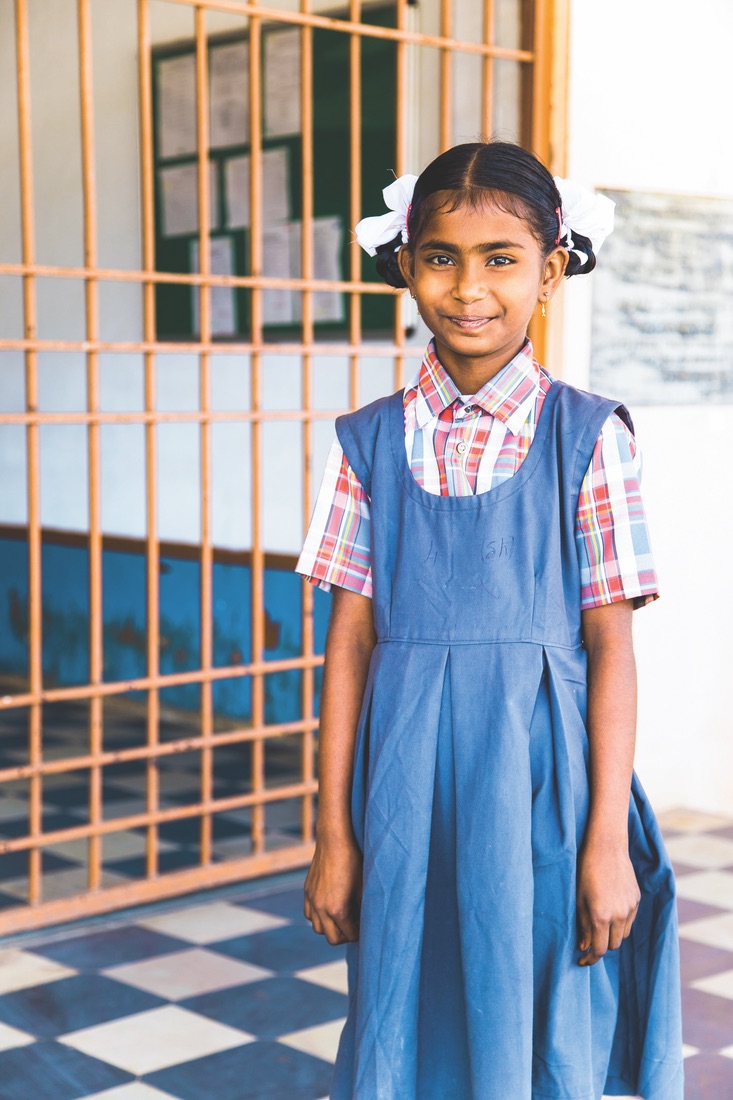
Preshanti in front of her school
With a little coaxing, she looked sheepishly into the camera and explained that she was in the fourth grade and that her name was Preshanti. In that moment, hunched over in bed with my eyes glued to my phone, I knew with every fiber of my being that I had to go to India to meet her.
Twelve months, forty-six hours of exhausting travel, and 9,500 miles later, I woke to the sound of students preparing for the day ahead: my first day in India. I hastily made my way to the courtyard below our guest house, where our team gathered for a tour of the compound. Buildings painted in bright colors lined the courtyard on three sides. To the north was a bright-blue dining hall, to the south a lime-green dormitory, and to the west a white nursing station with red trim. But this morning, we were headed east, where 1,800 boys and girls waited to greet us with firecrackers, flowers, and a special handshake I would soon master.
- Hannah Vermillion being welcomed to India by all the IREF students with flower garlands and fireworks
- Students at IREF
- A group of boys who study at India Rural Evangelical Fellowship (IREF)
As the team was engulfed by the throng of children, Jake pointed to a little girl patiently waiting with a garland of flowers. Preshanti. This was the moment I had been waiting for! My eyes welled up with happy tears as I bent down to say hello, and she placed the flowers around my neck before leaning in for a hug.
Awash with emotion, I clumsily introduced myself, explaining how excited I was to finally meet her. With a smile, she told me in broken English how happy she was that I was there. I was at a loss for words as I stood, slipped her hand into mine, and turned to meet her classmates—all 1,800 of them.
- A child in need of a loving sponsor. Visit irefusa.org to learn more.
- A child in need of a loving sponsor. Visit irefusa.org to learn more.
One after another they introduced themselves, asking me to repeat their names back to them before hurtling a handful of loose flower petals at me, a uniquely Indian way of showing honor. Slowly my group made its way to a small stage, where we were handed a microphone and asked to address the assembled students. They laughed when I told them they were beautiful, just like their Maker.
After the ceremony, we were invited to take a proper tour of the maze of school buildings and dormitories. Our first stop was a gleaming three-story pink building where Preshanti and four hundred of her classmates live. As we walked the dormitory’s halls, I noticed that each girl’s possessions were neatly packed into a trunk the size of a small moving box. I thought to myself, “Could I have packed for this trip in a trunk that small? Nope!” It would be impossible for me to put even my necessities in a box that size, let alone every possession I own.
- Primary school students playing in the IREF courtyard
- Preshanti and friends
- A nursing student at IREF
The children who live and study here mostly come from impoverished families and broken homes. Like many of her classmates, Preshanti comes from an impoverished village many miles away. Her father died when she was just a baby, and her mother, desperate for a helping hand, turned to India Rural Evangelical Fellowship (IREF) for support.
Members of the lowest social classes in India’s repressive caste system, families like Preshanti’s, are often denied government assistance. In some cases, entire villages are deemed “untouchable” and forced to fend for themselves in times of need.
Our second day in India, we had a chance to visit one such village. As our bus rumbled through the vast grain fields that surround Repalle, IREF’s head caretaker, Dee, explained that the name of the village we would be visiting translates to “the far away ditch.”
- A mother and child in an underserved village
- A mother and child in an underserved village
Upon arriving, we split into smaller teams to walk from hut to hut to pray over sore joints, hurting heads, blind eyes, barren wombs, and broken hearts. It was devastating to see so many people suffering from preventable illnesses and debilitations—a sobering reminder of the privileges we enjoy in the West.
But nothing shattered my worldview more than when we boarded the bus for the return trek to Repalle, and Dee handed me a crumpled one-hundred-rupee banknote—an offering from one of the villagers. My heart broke over the sacrifice someone had made. This would have fed a family for a week in that village, but instead, it was given as an offering that would be used to care for orphans at IREF.
- A typical hut in rural India constructed of mud and dried palm leaves
- A typical cooking station in rural India
There was a stark difference between the extreme poverty we witnessed in that village and the oasis of care, support, and opportunity IREF offers its students. As the bus rolled to a stop and the team gathered in the courtyard once more, I was overwhelmed by the fact that the beautiful little girl who welcomed me with a garland of flowers and a hug has been given hope for a better future. So many other children might not be as fortunate.
That night, the last of our trip, I struggled to fall asleep. I had met many amazing people, experienced overwhelming hospitality, and seen God move in miraculous ways. There was a part of me that wanted to stay, to never answer another email, like another post, or regret another needless purchase.
- Dee and Emmanuel Rebba
- Children playing in the new playground at IREF
- Students at IREF
And yet, I knew it was time for us to go home and share all that we had seen and experienced with anyone who would take a moment to listen.
Life in a place like rural India is incomprehensibly difficult, but thanks to amazing individuals like Dee and faithful ministries like IREF, anyone—even a graphic designer from Florida—can fall in love with a little girl or boy and play a small role in giving them hope for a better, brighter future.
- Opening gifts with our sponsor child, Preshanti
- Opening gifts with our sponsor child, Preshanti
- IREF’s head caretakers, Dee and Emmanuel Rebba, along with the student body, wish us farewell.
— V —
If you would like to learn how you can help a child study at IREF, visit irefusa.org today.
Share This Story!
KEEP UP WITH THE LATEST STORIES FROM VIE











